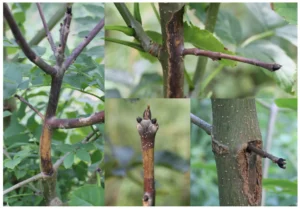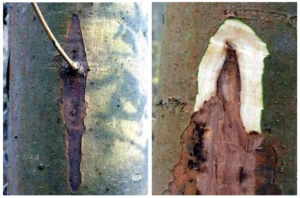Ash Dieback is one of the biggest threats to trees in the UK today. If you’ve got an ash tree in your garden or manage land with ash on it, you need to know what to look out for — and what to do about it. In this post, we’ll explain the symptoms, the risks, and what the future holds for our ash trees.
What is Ash Dieback?
Ash Dieback (caused by the fungus Hymenoscyphus fraxineus) is a serious disease that affects common ash trees (Fraxinus excelsior). It originated in Asia but was first confirmed in the UK in 2012. Since then, it’s spread rapidly across the country, especially in urban areas and woodlands.
The fungus attacks the tree’s vascular system, blocking water and nutrients and eventually killing the tree. It’s estimated that up to 80% of the UK’s ash trees could be affected.
How to Spot the Symptoms
Ash Dieback symptoms vary depending on the age and health of the tree, but key signs include:
Dark, sunken lesions on the bark
Wilting or blackening of leaves, especially at the tips
Dieback of shoots and branches, usually starting at the crown
Epicormic growth (new shoots sprouting from the trunk)
Sparse or thinning crown as the disease progresses


If you notice these signs — especially in combination — it’s time to get the tree inspected by a qualified tree surgeon.
Why Ash Dieback is a Serious Risk
Dead and dying ash trees become unstable and brittle, and can pose a serious safety risk — especially near footpaths, roads, buildings, or playgrounds. The wood becomes brittle and unpredictable, which makes climbing or cutting it highly dangerous.
For this reason, we strongly advise against DIY removal of infected ash trees. The work requires experienced arborists with the right equipment and training.
What You Should Do
Get a professional assessment: Early diagnosis can help with management decisions.
Act sooner rather than later: Waiting can increase the risk and cost of removal.
Check trees near public areas regularly: Landowners have a legal duty of care.
Consider replanting with native alternatives: Such as oak, hornbeam or field maple.
The Future of Ash in the UK
Not all is lost. Some ash trees appear to have natural resistance, and scientists are studying these trees closely in the hope of breeding more tolerant strains. But for now, the disease is expected to continue spreading.
Tree professionals like us are playing a key role in managing infected trees safely and supporting replanting efforts across urban and rural landscapes.
Need Help with an Ash Tree?
At Woodfelder Tree Care, we’re experienced in managing Ash Dieback across Manchester and Stockport. Whether you need a tree assessed, made safe, or removed entirely, we’re here to help — safely and responsibly.
📞 Contact us today for expert advice and a free quote.
🌳 Manchester’s Most Reliable Tree Surgeons
